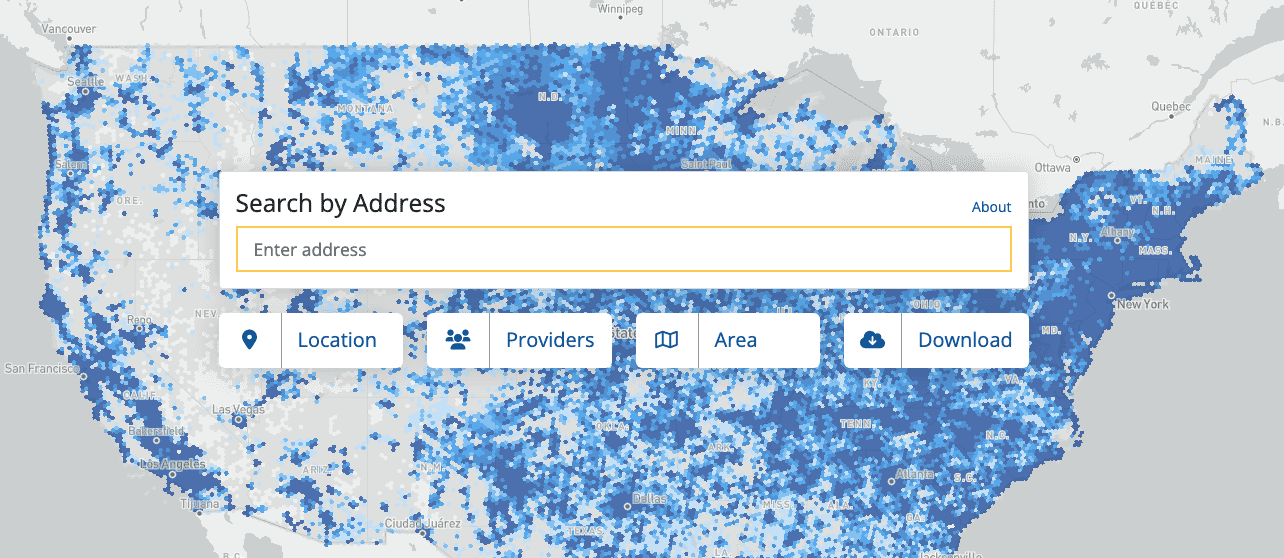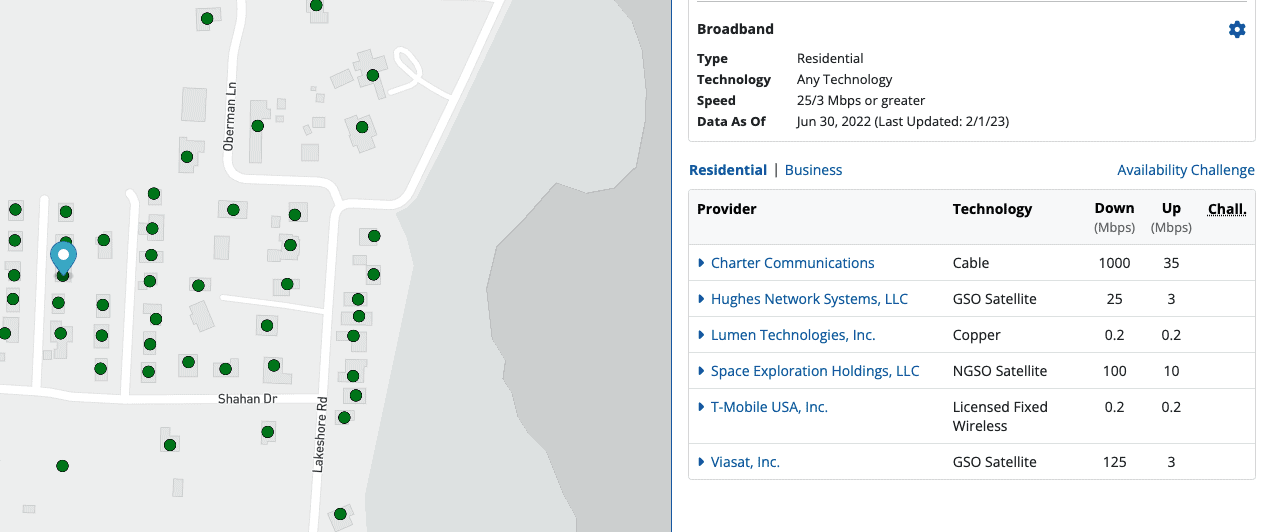The FCC recently released new broadband data which aims to improve upon the longstanding – and notoriously inaccurate – Form 477 availability data.
The new system is supposed to provide a much more granular look at broadband availability in the US, providing address-level information across every state in the country.
Crucially, this data is going to be used to inform millions of dollars of funding decisions as a result of massive government initiatives like the ongoing Broadband Equity, Access, and Deployment (BEAD) grants.
There’s only one problem: the data still isn’t reflective of reality.
The FCC, for their part, knows this:
“This is a beginning, not an endpoint, for the new era of broadband maps. While today marks an important milestone in the effort to create more granular and accurate broadband maps, this work is far from over. To emphasize how much more work needs to be done, we are calling the product we unveil today a pre-production draft. Releasing this early version of the new maps is intended to kickstart an ongoing, iterative process where we are consistently adding new data to improve and refine the maps.”
Across the country, state broadband officials have been scrambling to challenge the data regarding their state, calling for extensions of the deadline for the initial challenge filing period. That extension was ultimately denied, though the challenge functionality remains in place to help facilitate future map iterations. As a result, greater efforts need to be made to increase public awareness of the map revision process.
Consumers now have a direct line of communication
Individuals now have the ability to directly challenge the broadband plans the FCC claims is available to them. While the onus should not be on the general population to create maps that are accurate and useful, the point remains that crowdsourcing appears to be a major component of the government’s strategy going forward, alongside bulk audits from state and other entities.
The FCC has issued a public call for community stakeholder engagement around the new maps, which they’ve called a “pre-production draft.”
“The long-term success of this effort will depend on consumer and stakeholder engagement. To ensure that the maps are constantly improving, we have set up a system that allows consumers and others to challenge inaccuracies and provide feedback. Individuals who see that the information on the maps does not match up with what they know from their lived experience will be able to submit challenges, or request corrections, directly through the map interface. We will also accept bulk challenges to the reported availability data from state, Tribal, and local governments and other stakeholders who see problems we need to correct in multiple locations. We strongly encourage these parties to partner with us and share their input through the challenge process so we may continue to improve our maps. This crowdsourcing activity is an important part of getting the information we have right.”
How To Challenge the FCC’s New Map
Consumers can view the FCC’s initial map of broadband availability here. Follow these steps to confirm your service options, and if needed, challenge them.
Note: There are two types of challenges you can issue: location challenges and availability challenges.
Location challenges are primarily for areas that are incorrectly coded as consumer home addresses. The below instructions are centered around broadband availability challenges.

Step One: Type your address into the search bar
Begin typing your address into the portal. You should see an auto-complete pop up for your location. Click it to confirm your location.

Step Two: Look for data points that stand out to you
Look at the services that are listed for your address. If you feel as though any of the options are inaccurate, you can double check by calling the provider, or using their website to determine service eligibility.
Remember to collect documentation during this process, as you’ll need it when filing your challenge. Some examples of evidence provided by the FCC include “correspondence with the provider, screenshots of the provider’s website, or images of the provider’s marketing material.”

Step Three: Click “Availability Challenge”
Once you click the challenge button, you will be prompted to choose the service that you would like to challenge. Do so, and you’ll see additional forms pop up.
Step Four: Fill out all of the forms
Fill in your general information and describe why you want to challenge the availability of the service.
Reasons can include:
- Service is simply not available at your location
- Service is available, but not at the speeds described
- Service is available, but the wrong technology type is listed (says fiber, but only DSL or cable is offered)
Take a brief moment to create a description of what is stated vs what is actually available, upload your evidence, and you’re set.
Step Five: Confirm accuracy and submit your challenge
It is vital that you provide supporting documentation and are certain of your challenge before submitting. This cuts down on corrective work needed by the FCC and streamlines the entire process.
Once you’ve verified your challenge, submit it. Keep in mind that you will most likely not receive direct feedback from the FCC due to the amount of challenges being received.
The long view: why improved mapping matters
It can be frustrating to have your broadband situation misrepresented. What’s worse; this map and its data are going to be used to deploy historic amounts of funding meant to improve broadband availability across the country. This is why individual involvement is more important now than ever before.
The FCC’s previous mapping effort was completely inaccessible to the public. Instead, providers were required to submit data directly to the government via the Form 477 reporting mechanism. These old datasets have had a long-standing issue with overreporting where broadband is available.
Because billions of Federal dollars are at stake, it is vital to have the most accurate and timely data available to state broadband offices, all of whom are responsible for ensuring these funds get used where they are needed most.

